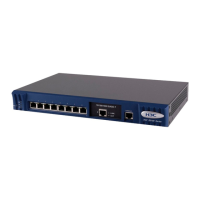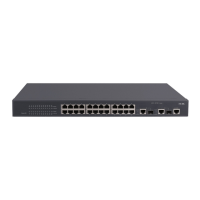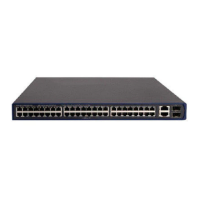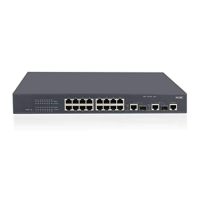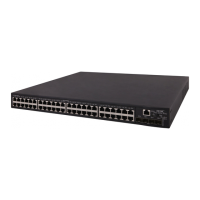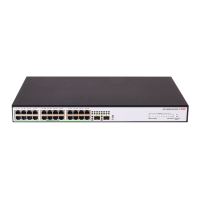2-21
When you execute this command on the management device with an inexistent member number or a
MAC address that is not in the member list, an error will occur. In this case, you can enter quit to end the
switching.
Examples
# Switch from the management device to number-6 member device and then switch back to the
management device.
<aaa_0.Sysname> cluster switch-to 6
<aaa_6.Sysname> quit
<aaa_0.Sysname>
cluster-local-user
Syntax
cluster-local-user username password { cipher | simple } password
undo cluster- local-user username
View
Cluster view
Parameters
username: Name of the public local user for the cluster, a string of 1 to 55 characters.
cipher: Cipher text password.
simple: Plain text password.
password: Password of the public local user for the cluster. If the password is in cipher text, the value is
a string of 1 to 63 characters; if the password is in plain text, the value is a string of 1 to 63 characters or
a string of 88 characters.
Description
Use the cluster-local-user command to create a public local user for the cluster. The username and
password are used to manage all member devices through Web.
Use the undo cluster-local-user command to remove all public local user configurations for the
cluster.
By default, no public local user is configured for the cluster.
z You can use this command only on the management device to create only one public local user.
z When you configure this command on the management device, the configuration will be
synchronized to the member devices that have passed the authentication; when a new member
device passes the authentication, this configuration is synchronized to the new member
automatically. If a user with the same name already exists, the new configuration will overwrite the
old one.
z If a member device leaves the cluster, the public local user configurations will not be removed.
Examples
# On the management device, create a public local user for the cluster: the username is public; the
password is 123 in plain text.
